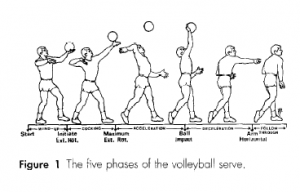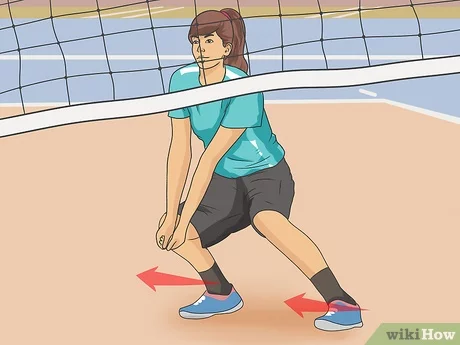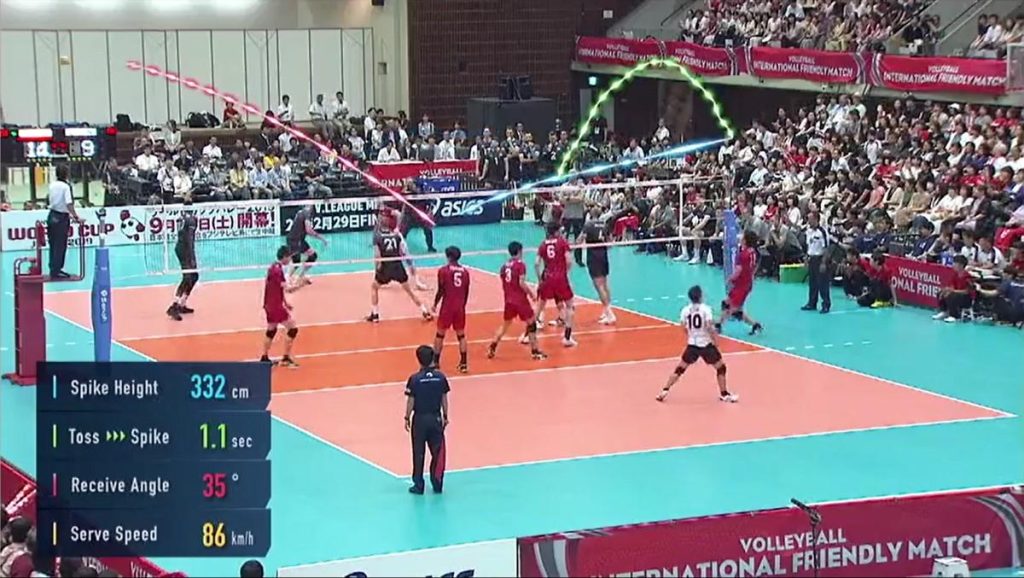An overhand serve in volleyball is a powerful skill. It requires technique, practice, and precision.
Mastering this serve can greatly impact your game. Volleyball is a fast-paced sport that demands agility and skill. The overhand serve is a crucial element in this game. Unlike the underhand serve, the overhand serve generates more speed and accuracy.
Players often use it to gain an advantage over opponents. Learning how to perform an overhand serve can seem challenging, but with the right guidance, it becomes manageable. In this blog post, we’ll break down the key steps to successfully execute an overhand serve. This summary will provide you with essential tips and techniques to enhance your volleyball serving skills. Stay tuned to elevate your game!
Introduction To Overhand Serve
The overhand serve in volleyball is a fundamental skill. It is used by players at all levels. Learning the overhand serve can improve your game.
Importance Of The Overhand Serve
The overhand serve is more powerful than the underhand serve. It allows players to control the ball better. A good overhand serve can put the opponents on the defensive.
- Increases ball speed
- Improves accuracy
- Creates more scoring opportunities
Basic Principles
The overhand serve has some key principles. First, the stance. Stand with feet shoulder-width apart. One foot slightly in front of the other.
- Hold the ball at waist height with your non-dominant hand.
- Raise your dominant hand behind your head.
- Toss the ball gently into the air.
- Strike the ball with the palm of your hand.
- Follow through with your arm, aiming at the target.
Practice these steps to master the overhand serve. Consistent practice leads to improvement.

Credit: www.mtrigger.com
Proper Stance
Understanding the proper stance is crucial for an effective overhand serve in volleyball. A good stance helps you maintain balance and generate power. It also ensures accuracy, which is key in serving.
Feet Position
Your feet position is the foundation of a strong serve. Stand with your feet shoulder-width apart. Your non-dominant foot should be slightly forward. This position provides stability and balance. Bend your knees slightly for better control. Keep your weight on the balls of your feet. This helps you move quickly and adjust your stance easily.
Body Alignment
Proper body alignment enhances your serve’s power and accuracy. Keep your shoulders square to the net. Your hips should align with your shoulders. This alignment helps in generating a straight serve. Maintain a slight forward lean with your upper body. It aids in transferring your body weight into the serve. Look at the ball and keep your eyes focused.
Ball Grip And Hold
Learning how to overhand serve in volleyball begins with the ball grip and hold. Proper technique in these areas is crucial for a successful serve. Let’s delve into the details to ensure your serve is accurate and powerful.
Correct Grip
First, hold the ball with your non-dominant hand. Keep your fingers spread out to support the ball. This grip provides stability. It also allows you to control the ball better. Avoid holding the ball with your palm. Use your fingers instead. This gives you more control and precision.
Ball Position
Next, focus on the ball’s position. Hold the ball at waist level. Keep it slightly in front of your body. This position helps you aim better. Ensure the ball’s center is aligned with your hitting hand. This alignment is key for an accurate serve. Finally, keep your eyes on the ball. Watch it closely to maintain focus and control.
Serving Motion
Understanding the serving motion is crucial for a successful overhand serve in volleyball. This motion involves several key steps that work together to deliver a powerful and accurate serve. Below, we will dive into the essential components of the serving motion, focusing on the arm swing and follow through.
Arm Swing
The arm swing is a vital part of the serving motion. Start with your serving arm extended behind you. Keep your arm relaxed but ready. As you step forward with your non-dominant foot, swing your arm forward in a smooth motion.
Ensure your arm is straight and your hand is open. This helps in making good contact with the ball. Aim to strike the ball with the palm of your hand. This allows for better control and power.
Follow Through
The follow through is the final part of the serving motion. After striking the ball, continue the motion of your arm in the direction you want the ball to go. This helps in guiding the ball accurately.
Your arm should fully extend and your hand should point towards your target. This ensures the energy from your swing transfers to the ball. A good follow through can make the difference between a good serve and a great one.
Footwork And Timing
To master the overhand serve in volleyball, two key aspects are footwork and timing. Proper footwork provides the foundation for a strong serve. Timing helps ensure accuracy and power. Both are essential for a successful serve. Let’s break down these components.
Step Sequence
The step sequence is crucial for a consistent serve. Start with your feet shoulder-width apart. Place your non-dominant foot slightly forward. Hold the ball in your non-dominant hand. Your dominant hand should be ready to strike.
Take a step forward with your non-dominant foot. Swing your dominant hand back. This prepares for the serve. As you step, shift your weight to your front foot. This adds power to your serve. Now, swing your dominant hand forward. Aim to strike the ball with the heel of your hand.
Timing The Serve
Timing is essential for a successful serve. Toss the ball with your non-dominant hand. The toss should be high and slightly in front. This allows for a strong, forward strike. Keep your eyes on the ball. This helps with coordination.
As the ball reaches its peak, swing your dominant hand. Aim to hit the ball at its highest point. This ensures maximum power and accuracy. Practice this sequence until it becomes natural. Good timing makes your serve harder to return.
Power And Accuracy
Power and accuracy are key components of an effective overhand serve in volleyball. Developing both elements can significantly improve your serving performance, making it harder for the opponent to return the ball. Let’s break down how to generate power and aim accurately when serving.
Generating Power
Generating power begins with your stance. Stand with your feet shoulder-width apart. Place your non-dominant foot slightly forward. Hold the ball in your non-dominant hand at shoulder height. Your dominant hand should be ready to strike.
Use your legs to add force. Bend your knees slightly. Push off the ground as you swing your arm. Transfer your weight from your back foot to your front foot. This motion helps generate power.
Your arm swing is crucial. Keep your arm straight and relaxed. Pull your hitting arm back and swing forward with force. Make contact with the ball at the highest point. This ensures maximum power.
Aiming Techniques
Aiming is just as important as power. Focus on a specific spot on the opponent’s court. This increases your accuracy. Keep your eyes on the ball as you prepare to serve.
Use your non-dominant hand to guide the ball. Point it towards your target. This helps with alignment. As you swing your arm, follow through in the direction you want the ball to go. This helps with accuracy.
Practice different types of serves. Flat serves have less spin and travel faster. Topspin serves dip quickly and are harder to receive. Experiment to find what works best for you.
Common Mistakes
In volleyball, the over hand serve is essential, yet many players struggle with it. This section discusses common mistakes that can hinder your performance. By understanding these errors, you can improve your serving technique and overall game.
Technical Errors
Technical errors often affect the quality of your serve. Here are some common mistakes:
- Incorrect Foot Placement: Your feet should be shoulder-width apart. This helps with balance and power.
- Poor Toss: A bad toss can ruin your serve. Ensure the ball is tossed high and straight.
- Improper Arm Swing: Your arm should swing in a smooth, controlled motion. Avoid jerky movements.
- Weak Follow-Through: Follow through is crucial. It helps in directing the ball accurately.
Mental Pitfalls
Mental pitfalls can also affect your serve. They are just as important as technical errors:
- Lack of Focus: Stay focused on the task. Distractions can cause mistakes.
- Fear of Failure: Worrying about missing can cause you to miss. Stay confident.
- Overthinking: Don’t overthink your serve. Trust your training.
By addressing these common mistakes, you can improve your over hand serve in volleyball. Focus on both technical and mental aspects to become a better player.

Credit: www.scribd.com
Practice Drills
Practice drills are essential for improving your overhand serve in volleyball. They help you build strength, accuracy, and consistency. These drills can be done alone or with a partner. Let’s explore some effective practice drills to enhance your overhand serve skills.
Solo Drills
Solo drills allow you to practice on your own. Start by standing a few feet from a wall. Serve the ball against the wall and catch it on the rebound. This helps you control the ball and perfect your serve form.
Another effective solo drill is the target serve. Place a target on the ground or use a hula hoop. Aim to serve the ball into the target area. This improves your accuracy and control.
Partner Drills
Partner drills involve practicing with another person. Stand opposite your partner and take turns serving the ball to each other. Focus on accurate serves that are easy to return.
You can also play a game of serve and receive. One person serves while the other tries to return the ball. This helps you practice under game-like conditions. It also improves your reaction time and teamwork.
Advanced Techniques
Mastering the overhand serve in volleyball is a crucial skill. Once you’ve got the basics down, it’s time to explore advanced techniques. These techniques can give you an edge in the game. We’ll cover two key advanced serves: the jump serve and the float serve.
Jump Serve
The jump serve is powerful and dynamic. Start with a consistent toss. The ball should go high and slightly forward. Use a three-step approach to gain momentum. Jump off both feet and swing your arm through. Aim to hit the ball at the highest point of your jump. This serve adds speed and force, making it hard to return.
Float Serve
The float serve is tricky for opponents. It has little to no spin. Start with a stable stance. Toss the ball in front of your hitting shoulder. Step forward as you hit the ball with a firm hand. Aim to strike the ball’s middle. The lack of spin makes the ball move unpredictably. This can confuse the receiver, giving your team an advantage.

Credit: www.wikihow.com
Frequently Asked Questions
What Is An Overhand Serve In Volleyball?
An overhand serve is a volleyball serving technique where the player strikes the ball with an open hand from above their head.
How To Improve Overhand Serve Technique?
To improve, practice your toss, maintain a consistent contact point, and ensure a strong follow-through.
Why Is Follow-through Important In Serving?
Follow-through ensures accuracy and power, helping the ball travel in the intended direction with more force.
What Is The Best Way To Practice Serving?
The best way is to practice regularly, focusing on technique, consistency, and gradually increasing power.
Conclusion
Mastering the overhand serve in volleyball takes practice and patience. Keep your stance firm. Focus on your ball toss. Use a strong arm swing. Follow through with your serve. These key steps can improve your skills. Remember to stay calm and consistent.
Practice regularly to build confidence. Soon, your serves will become more powerful and accurate. Enjoy the game and have fun while learning. Happy serving!


